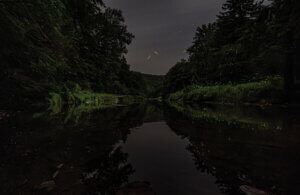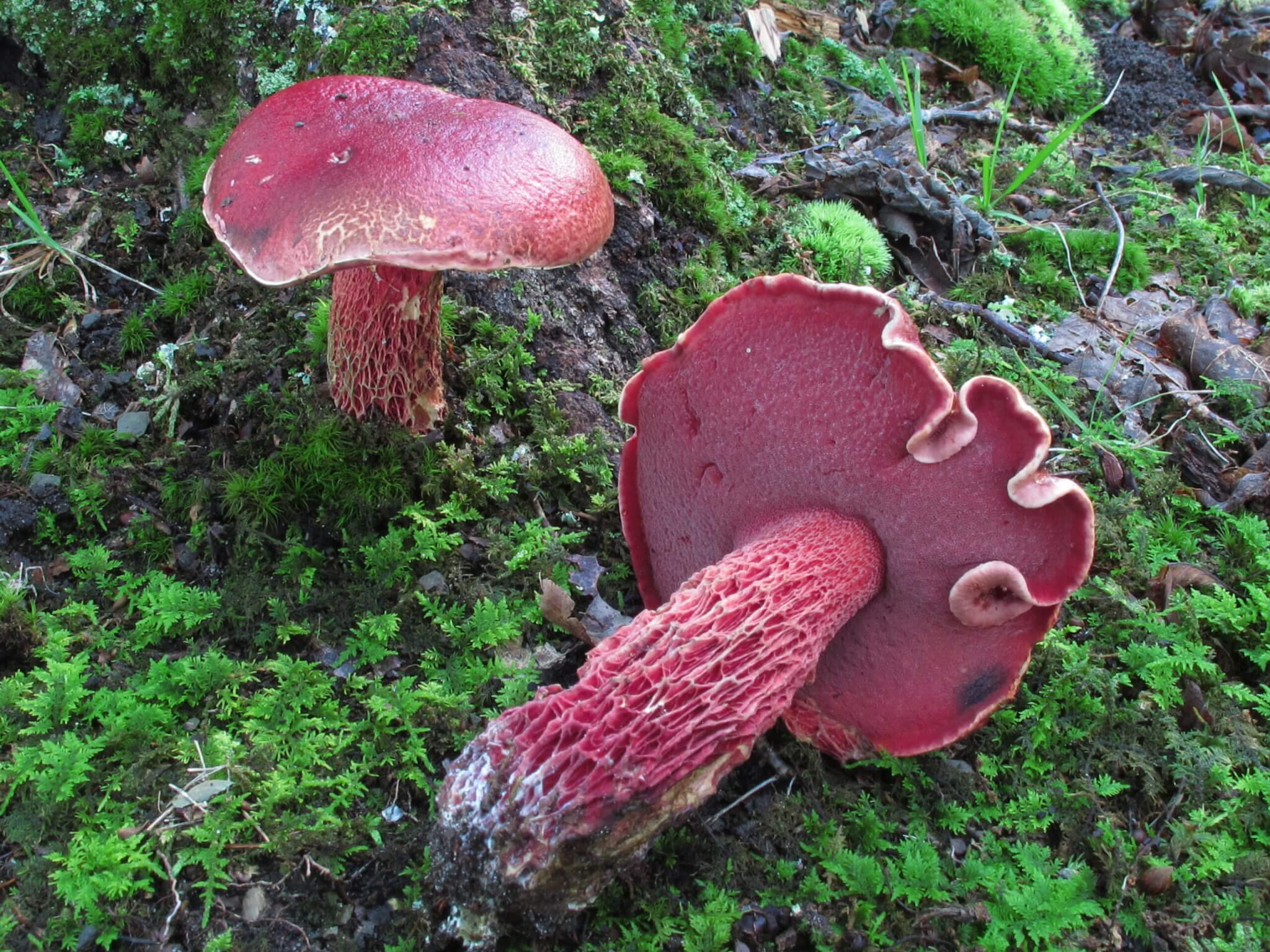
West Virginia’s oak heath forests are places of beauty and resilience.
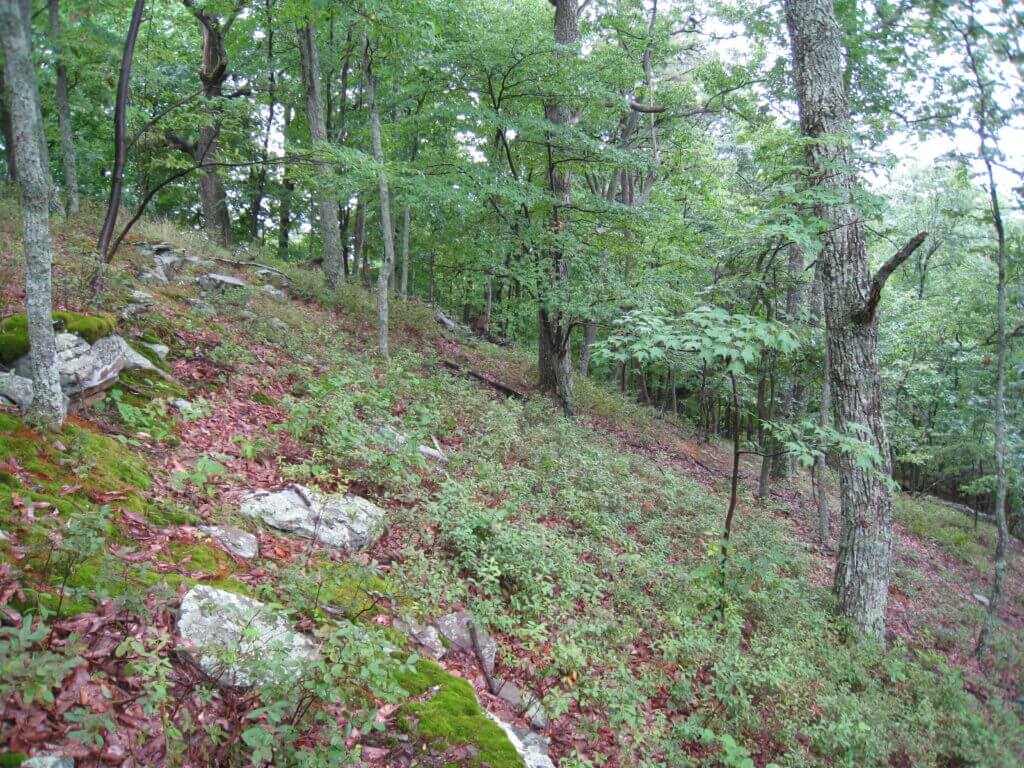
photographed by Jim Vanderhorst
West Virginia is among the three most forested states in the nation. This comes as no surprise to anyone who has witnessed the landscape of uninterrupted treetops stretching out as far as the eye can see.
Not all forests are created equal, though. It’s best to think of the Appalachian woods as a giant city made up of different neighborhoods, some more hospitable than others. Yet even in the most harsh conditions, life and beauty thrives.
Take oak heath forests, for example. “You’ll often find them on ridges and south-facing slopes. Places that either get a lot of sun and dry out, or ridges that the water drains from,” says Zach Fowler, a forest ecology researcher, a clinical assistant professor at West Virginia University, and director of the Core Arboretum in Morgantown. The soil in these forests is dry and acidic, with poor nutrient content. Yet they are full of life. Oak trees form the upper canopy of these communities, while the forest floor is covered with heath like rhododendron, azalea, and mountain laurel. This environment hosts a variety of wildlife, including black bears, ruffed grouse, and the eastern spotted skunk.
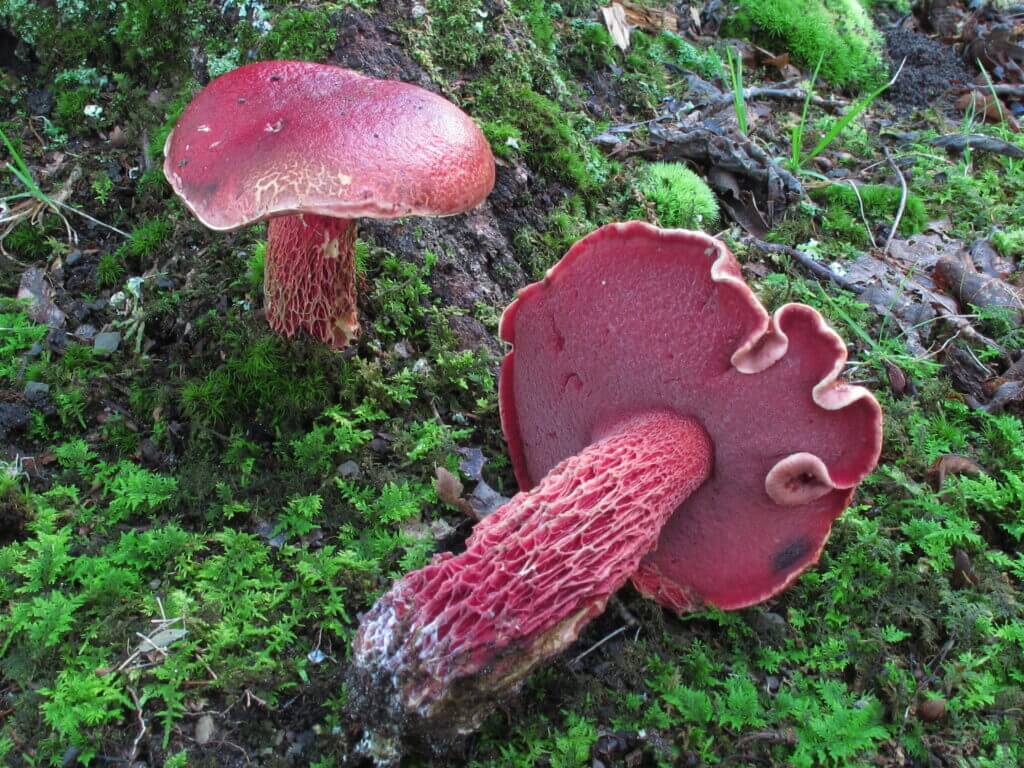
photographed by Bill Roody
But in the not-too-distant past, a tragedy struck the state’s oak heath forests and changed West Virginia’s landscape forever.
A Threat and a Secret to Success
Until the 1930s, oak heath forests had a third major component: the American chestnut tree (Castanea dentata). The trees once comprised about 20 percent of Appalachian forests and, in the early 20th century, were one of the most important wild plants in the nation.
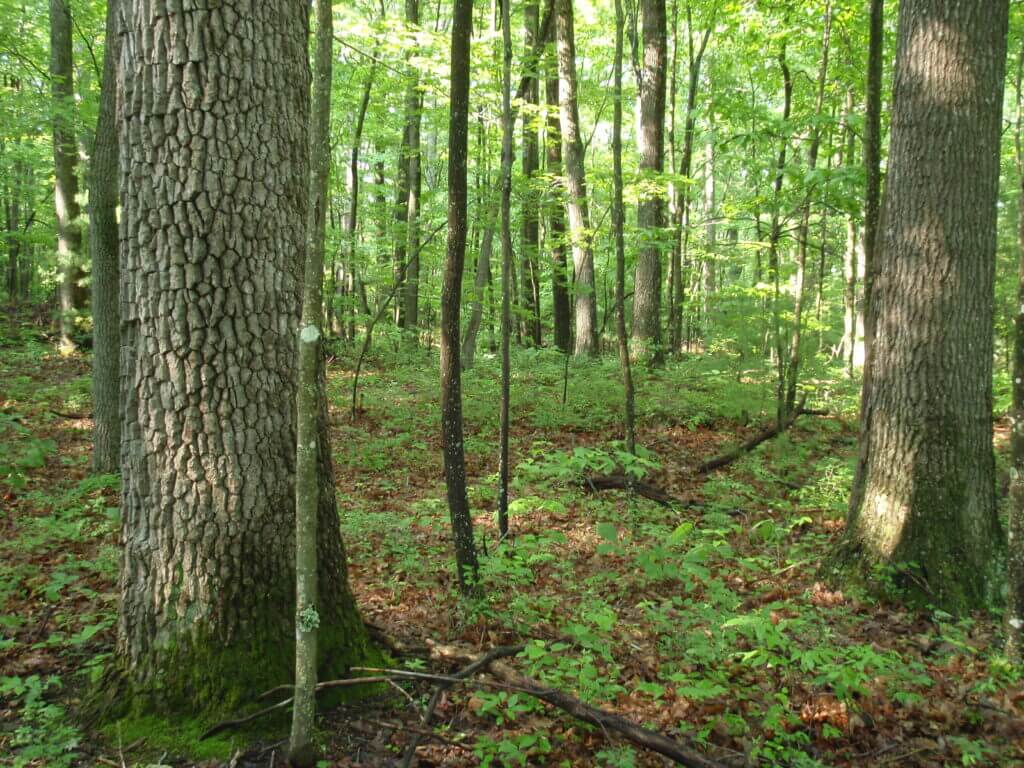
Southern Appalachian Oak / Heath Forest at Camp Creek State Forest, Mercer County WV 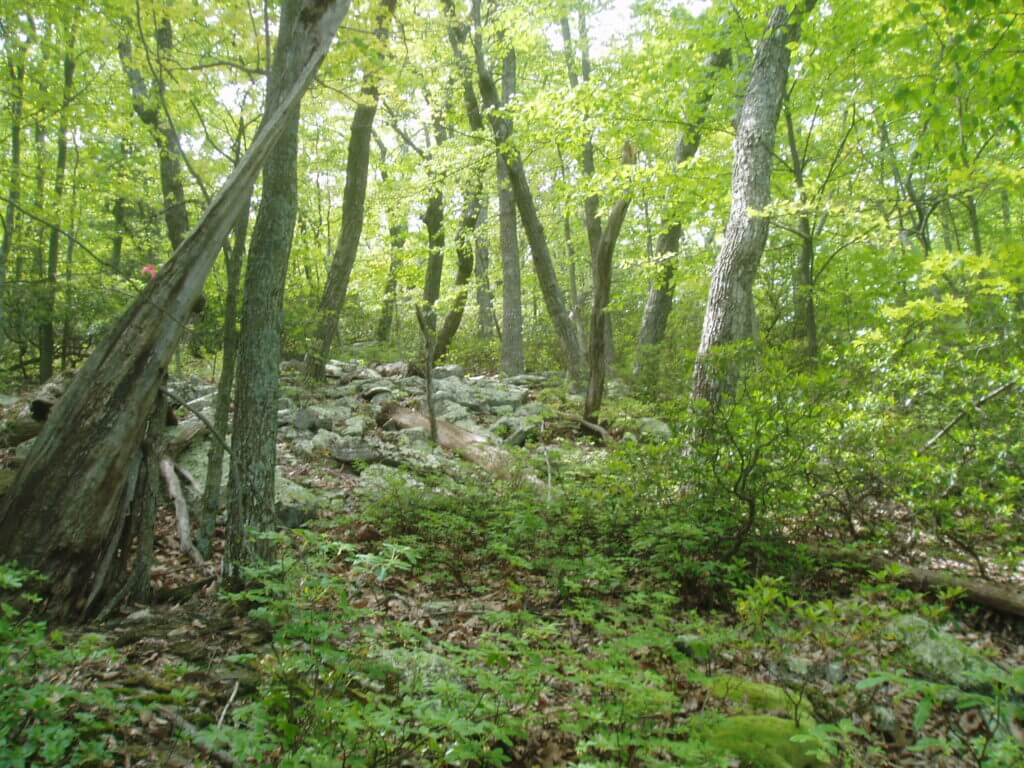
Ridge and Valley Chestnut Oak / Mountain Laurel Forest on Halfmoon Mountain, Hardy County 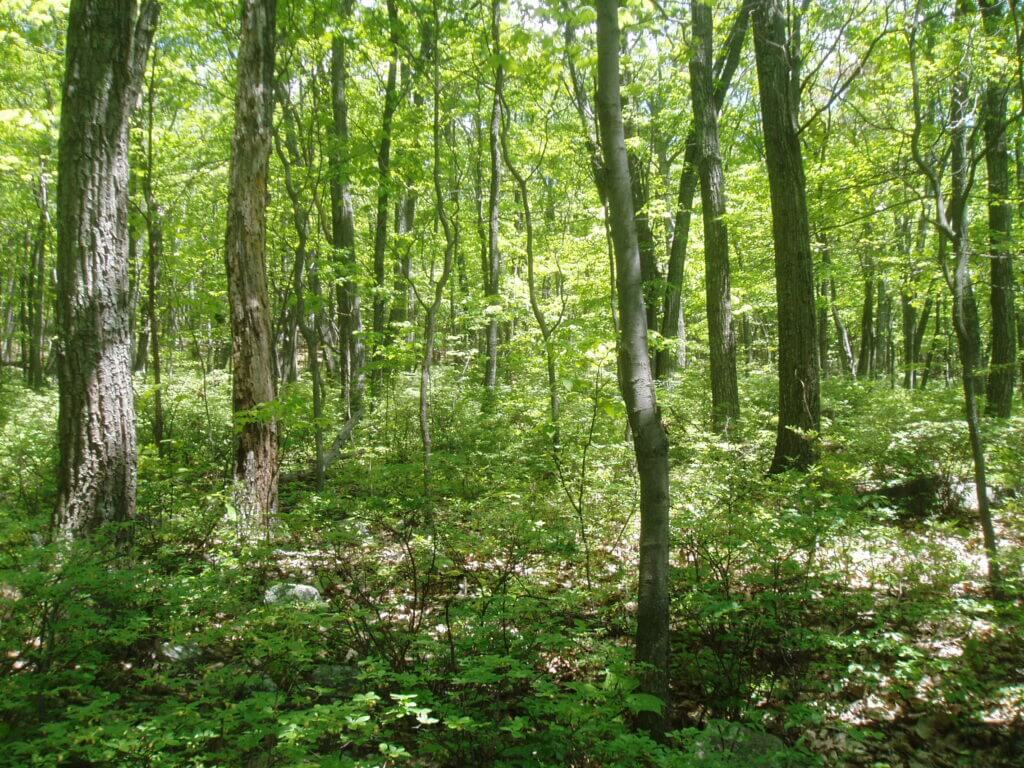
Ridge and Valley Montane Oak / Heath Forest at Wolf Gap, Hardy County 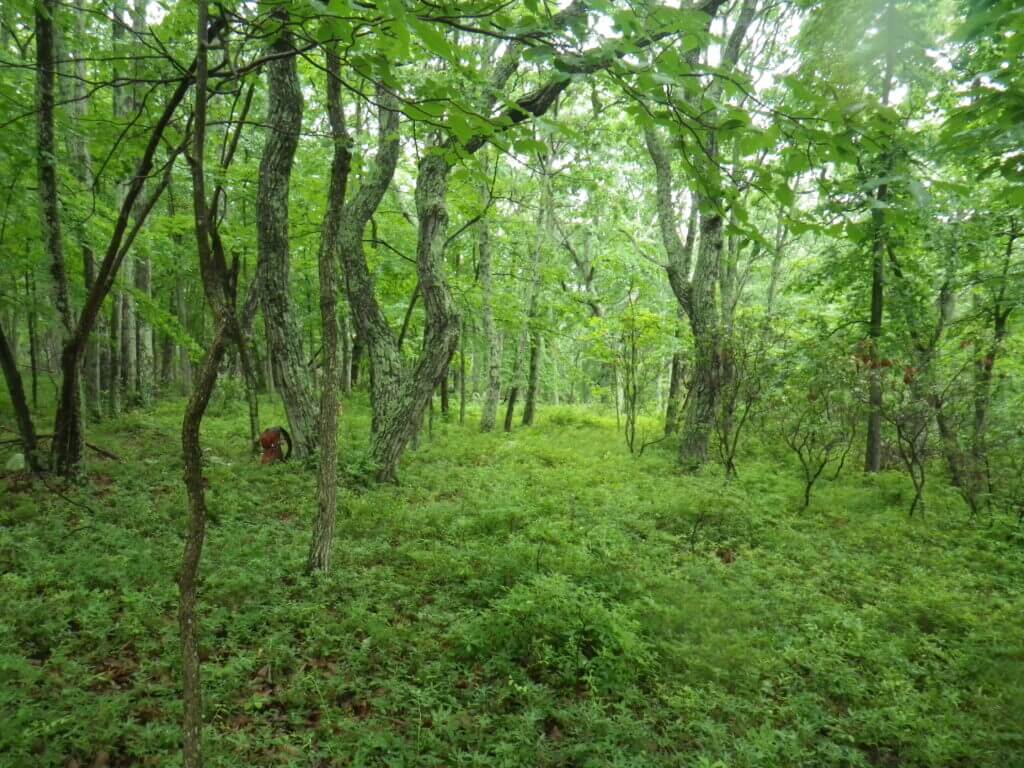
Ridge and Valley Montane Oak / Heath Forest on Long Mountain, Hardy County
Chestnut was an excellent building material, and its lumber fueled many rural economies. The nuts were a seasonal staple for mountaineers, who often baked chestnuts in their fireplaces and sometimes used them as currency for barter and trade. The nuts were also used as livestock feed. “They would release their pigs in the spring, and they would spend their summer foraging for chestnuts and acorns in these forests,” Fowler says. According to some historians, the diet improved the taste and consistency of pork, making mountain pork a sought-after commodity.
But at the turn of the 20th century, an invasive blight struck the American chestnut. The cause of the blight was a fungus, Cryphonectria parasitica, introduced by the import of Japanese chestnuts, which are resistant to its deadly effects. The disease was first reported in 1904 at the New York Zoological Park and spread at a speed of up to 50 miles per year. By 1940, the population had been completely decimated, with a casualty count of approximately 4 billion trees. Appalachian forests would never be the same.
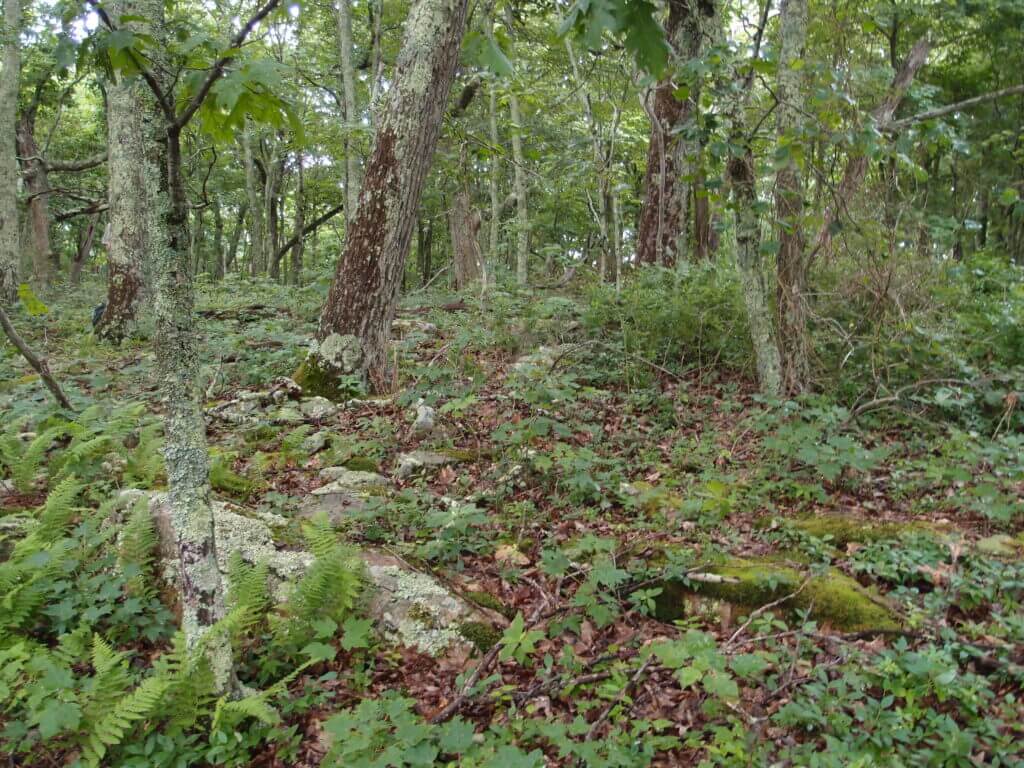
Southern Appalachian High Elevation Red Oak / Heath Forest on Fork Mountain, Monroe County
photographed by Jim Vanderhorst
Though one fungus was the cause of this tragic loss, another is the secret to the survival of the oak and heath that continue to inhabit these nutrient-poor soils. Specially adapted fungi known as “mycorrhiza” form a symbiotic relationship with the roots. Most trees and herbaceous plants have these kinds of associations, but they are especially important for oak heath forests.
Roots provide the fungus with sugars, which it needs for energy. In return, the fungus gives the plants nutrients that are scarce in the soil. The exchange is extremely efficient, so much so that Fowler calls the fungi “one of the best chemical engineers in the world.” “Almost all of the plants in an oak heath forest have mycorrhizal associations in order to satisfy their nutrient demands,” he says. “Otherwise, they wouldn’t be able to exist in those soils.”
Endangered but Enduring
While efforts are underway to replenish the chestnuts lost to blight, there are other challenges to the conservation of modern oak heath forests.
An excess population of white-tailed deer are drawn to the acorns and lower canopy of vegetation. Some of these forests are barely recognizable today because the heaths have been browsed to the ground, and the overconsumption of acorns has slowed oak regeneration.
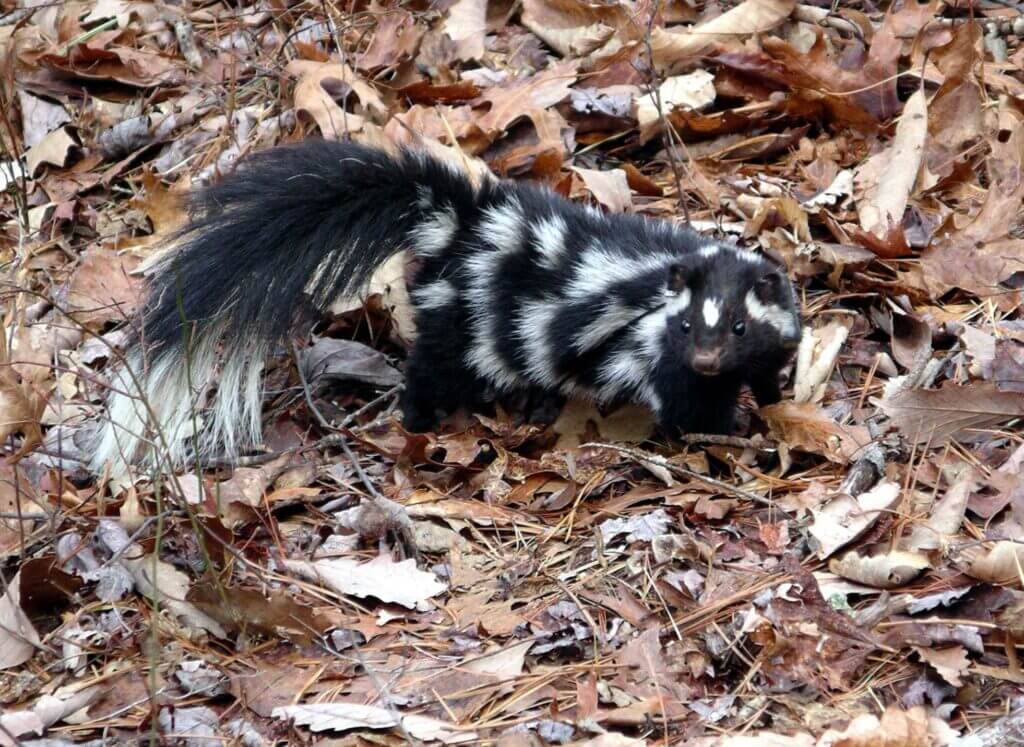
Eastern spotted skunk, a species that relies
on oak heath forests for habitat. An oak heath forest on Long
Mountain in Hardy County. Rose azalea blooming in an oak heath
forest at Seneca State Forest in Pocahontas County.
photographed by Paula Waggy
Another threat to these ecosystems is the gypsy moth, which swept south across the state in the 1980s and ’90s and is still causing extensive defoliation of oaks. But conservationists worry the insecticides sometimes used to combat the invasion may disrupt other insect communities in the forests.
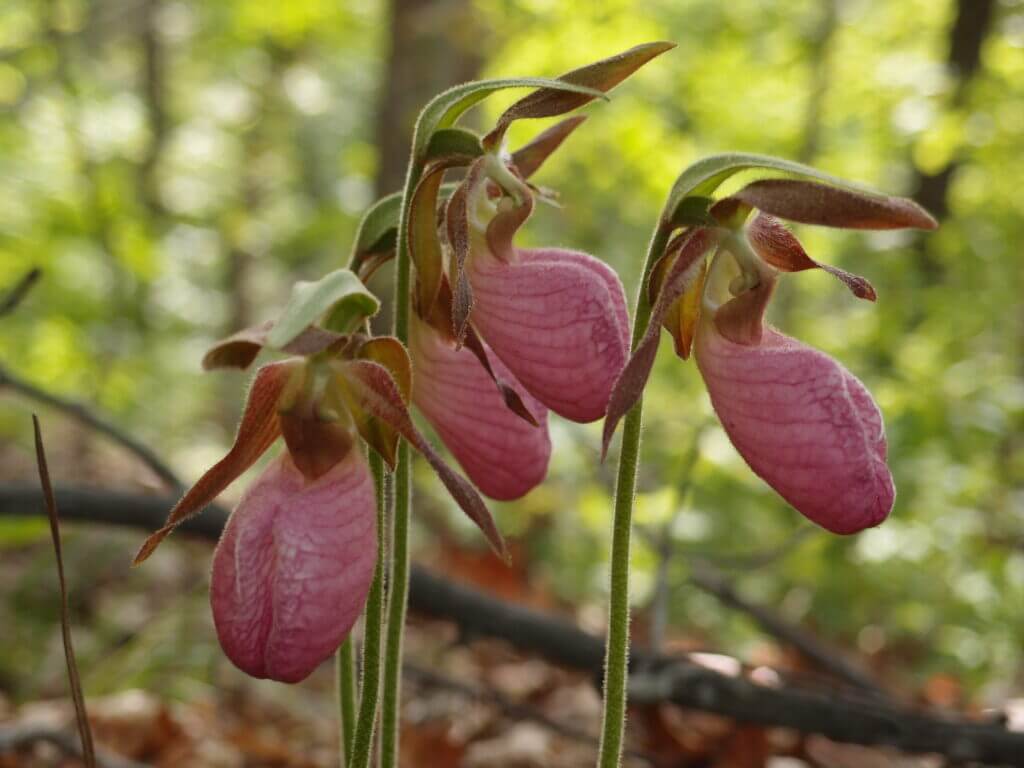
moccasin flower (Cypripedium acaule) is common in Oak / Heath Forests 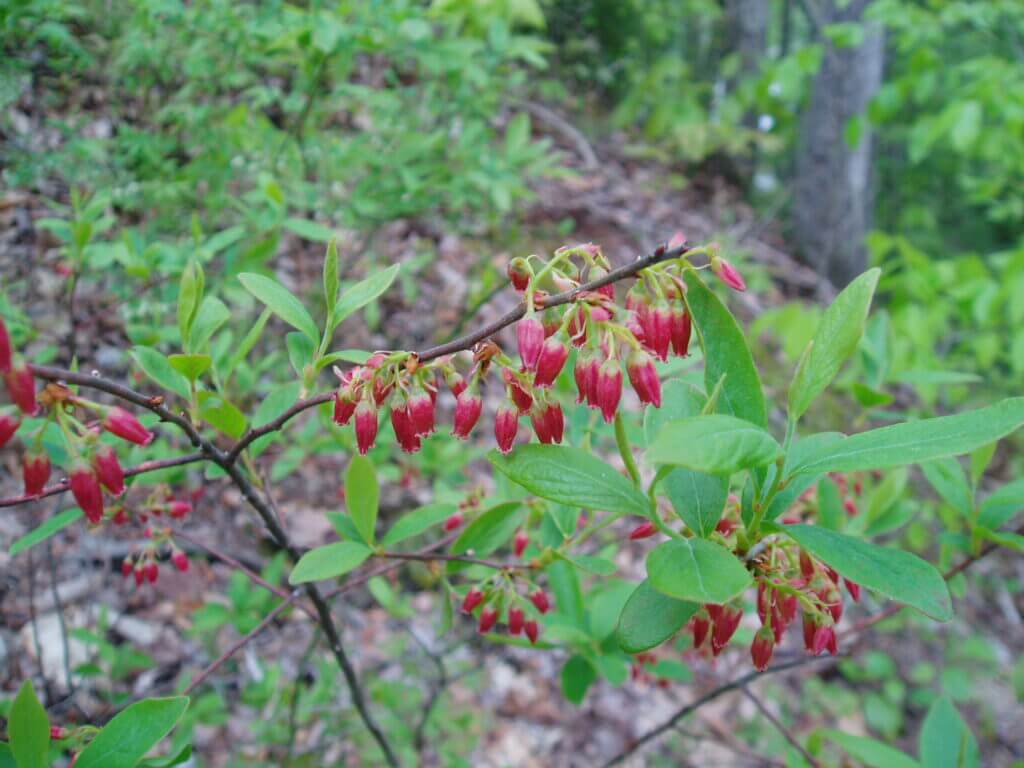
black huckleberry (Gaylussacia baccata)
photographed by Brian Streets
Still, oak heath forests remain a treasure of the West Virginia landscape. Over the past century, their importance to the state’s inhabitants has shifted from sustenance and utility to recreation and leisure. Many of the state’s best hiking trails are routed through an oak heath forest. Fowler says there’s a very good reason for that. “There’s a lot of these forests in West Virginia and they are beautiful. People love oak trees, the rhododendron is our state flower, and, because of the mycorrhizal fungus, there are a lot of mushrooms at certain times of year. They’re just really beautiful forests to be in.”
Want to learn more? For more information and photos, visit www.wvdnr.com.





